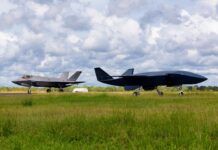Boeing has been awarded a USD 2.8 billion (EUR 2.4 billion) contract for the Evolved Strategic Satellite Communications (ESS) programme, the space-based component of the US nuclear command, control, and communications (NC3) architecture, the company announced on 3 July 2025.
The initial contract covers two satellites, with options for two more in the future.
The ESS space vehicles, the first of which is set for delivery by 2031, will provide increased capacity, flexibility, reliability and resilience compared to the strategic communications satellites currently on orbit. Since 2020 Boeing has been executing technical maturation and risk reduction under an ESS rapid prototyping contract for the US Space Force.
When deployed in geostationary orbit – about 35,700 km from the Earth’s surface – ESS will provide persistent coverage to strategic warfighters worldwide. The spacecraft will leverage a highly protected waveform and classified technologies developed in partnership with the US Department of Defense.
Boeing’s ESS solution is underpinned by technology the company has developed for the Wideband Global Satcom (WGS)-11 and WGS-12 satellites and has already been proven on orbit aboard the commercial O3b mPOWER constellation. Building on these developments, Boeing’s strategic military communications satellite constellation will be equipped with flexible and resilient signals to protect against interruption or interception.
“It’s a critical time to advance US space capabilities to ensure peace through strength,” Cordell DeLaPena, the US Space Force Program Executive Officer for the Military Communications and Positioning, Navigation, and Timing Directorate, was quoted as saying in a Boeing press release. “The strategic communication mission requires protection, power and always-available capability, even through adversary attempts to interrupt our connectivity. These satellites will provide connectivity from space as part of a refreshed NC3 architecture for our nation.”
“This win validates all the investments and innovations we’ve made in our satellite technology, creating a technically mature and low-risk offering for the government,” added Michelle Parker, vice president of Boeing Space Mission Systems. “We scaled our production capacity, invested in our team, hired cleared talent, and assembled hot production lines to make sure that we can hit the ground running from day one. We are committed to delivering this critical capability to meet the strategic need.”












